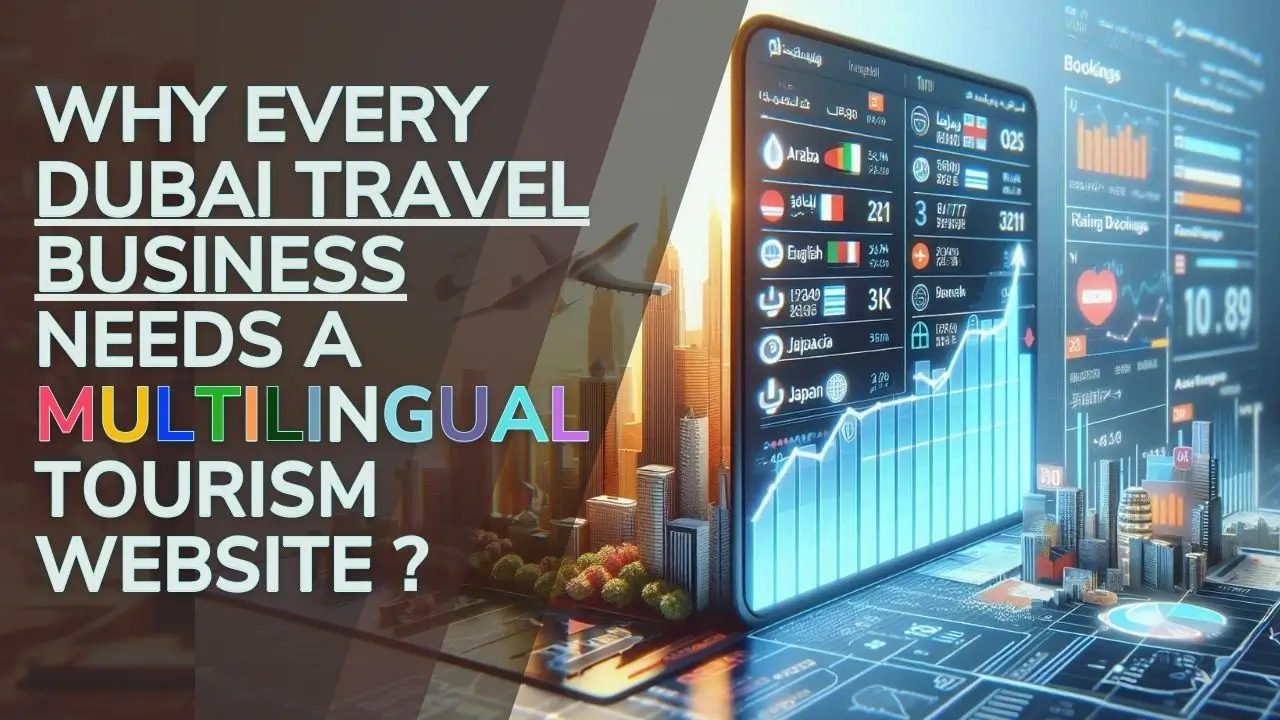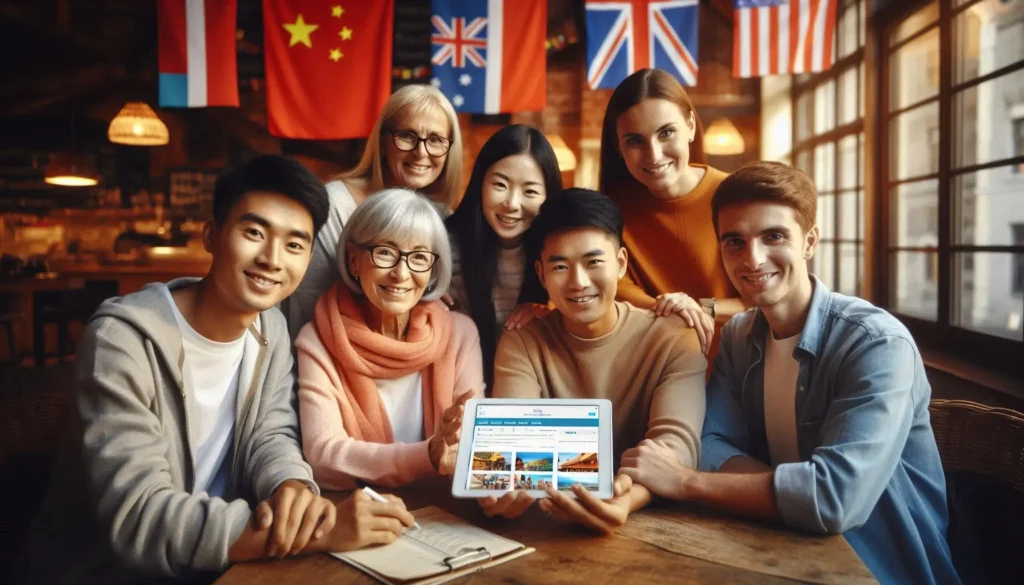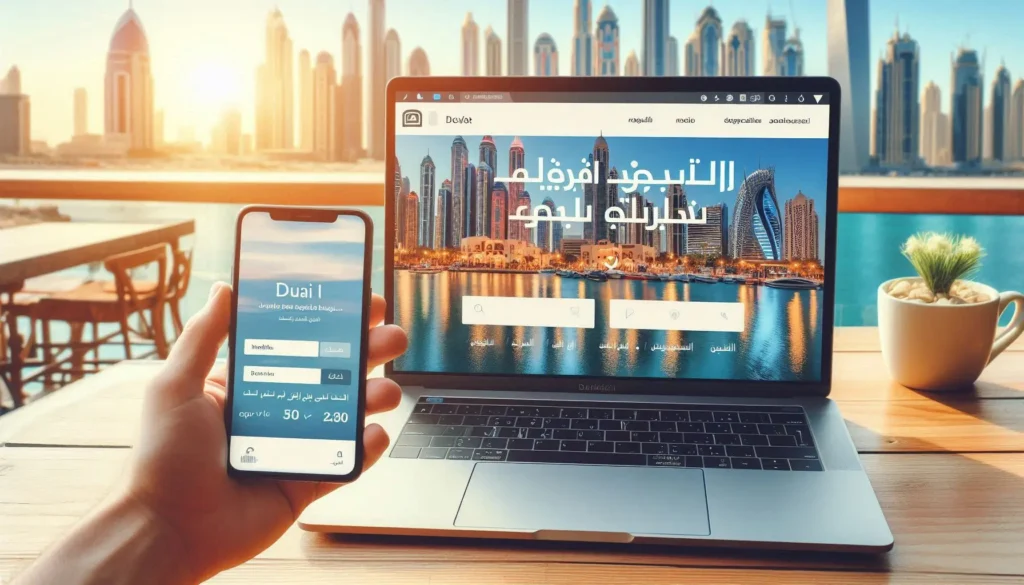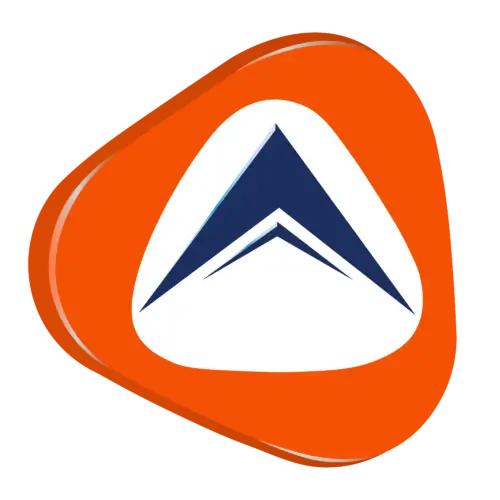
In today’s fast-paced tourism industry, a multilingual tourism website is essential for any business in Dubai looking to expand its global reach. Tourism in Dubai is booming, attracting visitors from all over the world, and ensuring your website speaks multiple languages allows you to connect with these international tourists effectively. Expand your Dubai travel business globally with a multilingual site! This strategic move will not only enhance customer experience but also boost your SEO rankings, increase trust, and ultimately, generate more bookings
Why a Multilingual Website is Key for Dubai Tourism
Dubai has emerged as a top global travel destination. Tourists from different linguistic backgrounds visit the city for its luxury, adventure, and unique culture. A multilingual tourism website ensures that these diverse tourists can find the information they need in their native languages, giving your business a competitive edge.
Not only does a multi-language travel website cater to more tourists, but it also significantly improves your site’s visibility in search engine results. Speak your tourists’ language and enhance bookings.
Boost Your Tourism Business Today – Create a Multilingual Website!
Boosting Global Tourism SEO with Multilingual Websites

A multilingual tourism website is one of the most effective tools for improving global tourism SEO. By offering multiple language options, you make your site accessible to a wider audience, thus increasing the chances of being indexed in various localized search results. Boost visitor trust with a multi-language tourism website.
- Localized SEO: Including languages like Arabic, which is spoken widely in the Middle East, particularly benefits tourism businesses targeting Dubai. Many blogs miss this key advantage, yet localizing your content for specific regions like Dubai enhances your search rankings.
- Long-Tail Keywords: Including long-tail keyword strategies in multiple languages can help target niche markets and improve visibility. For instance, incorporating long-tail keywords in Arabic for Dubai travel can attract more localized search traffic.
How Localized Web Design Impacts Tourism Businesses in Dubai
Localized web design plays a pivotal role in ensuring a smooth user experience. By adapting your website to suit the cultural and linguistic preferences of different tourists, you create an inclusive environment that builds trust and fosters engagement.
- Enhanced User Experience: A multilingual tourism website can feature cultural elements like local currencies, popular tourist spots, and even Arabic writing, making visitors feel more comfortable navigating through the site.
- Improved Conversion Rates: Tourists are more likely to book with businesses that communicate in their native language. By providing content in multiple languages, including English, Arabic, and other prominent global languages, you increase your chances of conversion.
SEO Strategies for Multilingual Tourism Websites
To fully leverage the SEO benefits of a multilingual tourism website, you need to implement the right strategies. Here’s how you can optimize your website for global search engines:
- SEO and URL Structures for Multilingual Sites: Properly structuring URLs for each language can ensure your website performs well in various countries. For instance, using subdirectories like “/en/” for English and “/ar/” for Arabic can help search engines index your pages correctly.
- Multilingual Content Optimization: Ensure that your keywords in each language are optimized according to the local search engine trends. This includes understanding local search behavior and incorporating global tourism SEO keywords in your content.
Multilingual Content and Conversion Rates

Research shows that multilingual content can significantly improve conversion rates. Tourists are more likely to book travel services on a website that provides information in their native language. This not only boosts trust but also improves the overall user experience.
- Analyzing Conversion Rates: You can analyze how multilingual content impacts your bounce rates and time spent on site. A lower bounce rate indicates that users find the content relevant and are likely to explore more pages or make bookings.
- Increasing Engagement: Tourists who understand the content are more likely to engage with it, whether it’s through inquiries, bookings, or social media shares.
Technical SEO for Multilingual Tourism Websites
Most travel blogs overlook technical SEO for multilingual websites. However, it’s an essential part of ensuring your multilingual website ranks well in search engines.
- Hreflang Tags: Use hreflang tags to help search engines understand which language version of your content to display to users in different regions. This avoids duplicate content issues and ensures that users are directed to the correct language page.
- Page Load Speed: Ensure that your multilingual website is optimized for speed. Slow loading times can lead to higher bounce rates, which negatively impact your SEO rankings. Compress images, use a content delivery network (CDN), and employ caching techniques for faster load times.
How Arabic Localization Helps Dubai Tourism Businesses

A multilingual tourism website localized for Arabic-speaking tourists provides a massive advantage in Dubai. Many international tourism websites overlook the significance of Arabic SEO, missing out on a large audience. Here’s why it’s beneficial:
- Reaching a Wider Audience: Arabic is the fifth most spoken language in the world, and in Dubai, it’s crucial to communicate with Arabic-speaking tourists to maximize your market reach.
- Improved Search Engine Rankings: Google and other search engines give preference to websites that offer relevant content in the user’s native language. Localizing your website for Arabic can significantly boost your rankings in the UAE and Middle Eastern markets.
Common Mistakes to Avoid in Multilingual Tourism Websites
Building a multilingual tourism website can offer immense benefits, but there are a few common pitfalls to avoid:
- Ignoring Cultural Nuances: Simply translating content is not enough. Ensure your website is culturally adapted for each target audience. For instance, the imagery and colors used in Dubai’s Arabic market might differ from those used in European markets.
- Skipping Long-Tail Keywords: Many businesses focus on primary keywords but ignore the potential of long-tail keyword strategies. Long-tail keywords in each language help target specific tourist queries and improve your chances of conversion.
The Impact of Multilingual Tourism Websites on Bounce Rates
One of the often-overlooked aspects of multilingual websites is how they impact bounce rates. A well-optimized, multilingual site can keep tourists engaged, reducing the likelihood of them leaving the site quickly.
- Lower Bounce Rates: A well-structured multilingual website provides tourists with the relevant information in their language, reducing the chances of them bouncing off the site.
- Higher Engagement: When tourists find a website easy to navigate and understand, they are more likely to stay longer, browse more services, and complete bookings.
Implementing Call-to-Actions on Multilingual Tourism Websites
Effective call-to-action (CTA) buttons are crucial for driving conversions on multilingual tourism websites. Here are a few tips for creating compelling CTAs:
- Language-Specific CTAs: Ensure your CTAs are translated and culturally adapted for each audience. A CTA that works in English may not resonate with Arabic-speaking tourists.
- Positioning and Timing: Place CTAs in strategic positions on your website, such as after a tour package description or a customer review. These elements should guide the tourist towards booking your services.
Role of WordPress in Creating Multi-language travel websites
WordPress makes it simple and accessible to build and maintain multilingual tourism websites, even for non-technical users. With its intuitive interface, businesses can easily add pages, posts, and content in multiple languages. A significant advantage is the availability of plugins like WPML (WordPress Multilingual Plugin), Polylang, and TranslatePress, which enable seamless content translation, language switching, and localization. WordPress themes and plugins are often optimized for SEO, helping websites rank better in different languages. Additionally, it offers pre-built travel templates and integrates with booking engines, making it ideal for tourism businesses. The platform’s flexibility ensures easy maintenance and updates, while features like multi-language SEO tools further improve visibility in search engines.
Frequently Asked Questions
1. How does a multilingual website improve SEO for my Dubai travel business?
A multilingual website improves your SEO by making your content more accessible to a global audience, increasing visibility in localized search results and reducing bounce rates. It also allows you to rank for long-tail keywords in various languages.
2. Why is Arabic localization important for a tourism business in Dubai?
Since Dubai has a large population of Arabic speakers, localizing your content for Arabic can help you tap into this market more effectively. It enhances user trust, improves engagement, and boosts your rankings in Arabic search results.
3. Can a multilingual website increase my conversion rates?
Yes, tourists are more likely to book travel services on a site that communicates in their native language. Offering multilingual options enhances the user experience and fosters trust, ultimately leading to higher conversion rates.
4. What are some common mistakes to avoid when creating a multilingual website?
Common mistakes include poor translations, ignoring cultural nuances, and failing to implement technical SEO like hreflang tags or optimized URL structures. These can negatively affect your site’s performance and user experience.
5. How do I structure URLs for a multilingual tourism website?
Use subdirectories or subdomains for each language version of your site, such as “/en/” for English and “/ar/” for Arabic. This helps search engines index the pages correctly for different regions.




